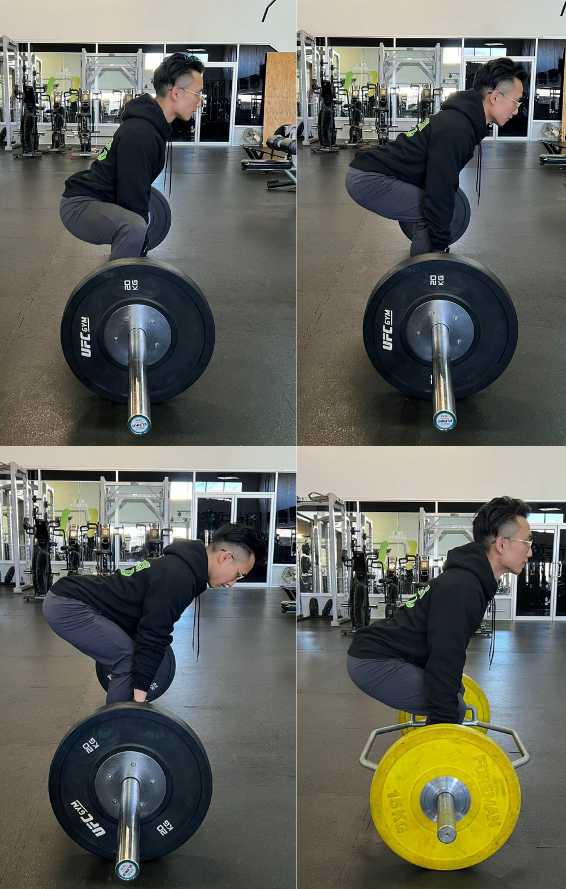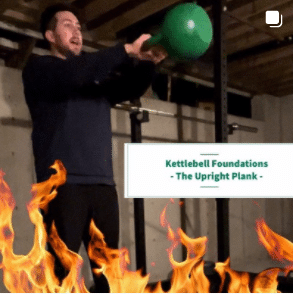March 30, 2017
Using Resistance Training to Overcome Metabolic Dysfunction: FIT after 40
Spoiler alert: this Blog, I mean book, comes from a dude’s perspective. But ladies, this article, and the concepts like bone density, fascia, and function very much apply to you.
Weight training: you either love it or hate it. That being said, it is safe to assume that a large number of teenage dudes, myself included, began lifting weights during their high school years. You can also presume that most weren’t concerned with mobility, stability, or functionality. Finally, most #broscience athletes in an attempt to improve their status in athletics, avoided metabolic demand or calorie deficit like the plague. However, fast forward a decade or 3 later to present day, add 20 lbs. (10 of which is around the midsection), and all of sudden the body violin starts playing a different tune. Given that research & statistics show that the ability to develop strength doesn’t decrease significantly until the 6th & 7th decades, why not hop back on the Arnold Schwarzenegger, pecs of a Greek God or Jane Fonda buns of steel program? What happened in those 20 years to prevent those same programs from creating a similar but older version of yourself?
This question tends to bring forth the next: What at are the underlying, age & time related issues?
“Due to sitting and automation, we spend a large amount of our day inactive. Relative inactivity leaves your body seized, your metabolism & sex hormone levels low, and frankly, your whole body sad.”
The video below explains how automation & inactivity have created increased metabolic dysfunction / disorder in today’s society. This is specifically why HIT training is so important but also why it is generally dangerous for today’s fitness client. There are a number of reasons why obesity is on the rise, but one of them is a generational change in activity & calorie expenditures. Today’s generation has lower daily averages of both in comparison to that of our ancestors. Another reason is age and loss of muscle mass over time. The good news – both are preventable.
- “The mean RMR from studies post-1980 appears to be lower than that for pre-1980 studies, roughly 0.86 versus 1.0 kcal·kg−1·h−1, respectively.” (5)
- BMR / RMR typically declines by 1–2% per decade after age 20, mostly due to loss of fat-free mass.
More importantly, how have / do these metabolic changes affect the way we train? Well, there’s trend towards HIT style training. Since most of the day is spent burning a small number of calories/min, today’s fitness session is trending towards programs that torch more calories/min (i.e. HIT, circuit training, fullbody explosive power programs, WODS etc). This helps overcome the remainder of the days metabolic funk, and therefore manage our metabolism & weight more effectively. Intuitively, this makes a lot of sense. Now, enter the law of use and disuse. Tissues adapt over time to inactivity/disuse and therefore have a difficult time adjusting to intense activity/use. This is especially problematic when a person’s day to day fitness activities are metabolically incongruent. I refer to this as a metabolic mismatch. The more time an individual spends relatively inactive, the more likely they are to be injured during high intensity activity. That is even more evident when this metabolic mismatch has accrued over time (i.e. age). That is why adults are more injury prone during HIT workouts than youth & adolescences.
Problem #2: most of our fitness clients are between the ages of 30-50 (Adults).
Problem #3: the old school training methods we once used are contractile dominant (I will explain this shortly) and not the most effective at creating metabolic demand. Furthermore, they often lead to movement dysfunctions such as limited range of motion, poor balance, loss of muscle elasticity etc. Beyond metabolic dysfunction, I have listed a few other reasons to adapt training programs away from the contractile dominance of machines and bodybuilding:
- Bodybuilding / hypertrophy & powerlifting / max strength programs often lead to soft tissue injury.
- There is life outside the gym and appealing to Jane. People start thinking about their family and living a long life.
- Somewhere along the way, the concept of health became imp. and OMG extra cardio is needed to keep the lbs. down.
- For the most part SIZE DOESN’T MATTER anymore.
Because of these and other reasons, now the average 40 yr old needs a training program that can help them look a little buff, but also feeling good. They also want a body that is bullet proofed against recreational sport, unexpected life movements, cancer, heart disease and obesity. To that end, the point of this article is to bring Bro Science 20 years ahead, out of the Arnold, Muscle & Fitness days and into the reality of FITafter40. Our knowledge of muscle physiology and functional performance has evolved significantly over the last 20 years. Olympic lifting, weightlifting, bodybuilding, athletic conditioning, gymnastics, picking things and putting them down all fall under the category or resistance training or loaded movement. When I wrote my book, “The Great Balance & Stability Handbook” back in 2003, a major paradigm shift was occurring, from linear bodybuilding, big muscle movements towards multidirectional movement / athletic & high functional training. This paradigm shift included the integration of instability training via therapeutic modalities and progression.
Why? People began pushing the metabolic envelope and training like athletes to combat this issues listed above.
Problem: when you train at high intensity but spend most of the day & life inactive, it’s too large of a gap to bridge, especially without highly supervised progression. HIT training has led to an abundance of gym related injuries, joint and muscular pain. TIP: if you are a new therapist, open a clinic directly adjacent any fitness facility that has client’s training at high intensity.
Solution: PREHAB and adding stabilization, balance and therapeutic modalities to our fitness training.
From a progression perspective, Stabilization & Athletic Training / Power are on opposite ends of the functional resistance training continuum. In reality, all adults should be capable of stability, reactivity, strength and power on demand. But, today’s homosapien’s are no longer caveman, and our bodies have adapted to the inactivity’s of our adult lifetime. Sadly, these circumstances require diligent progressive practice, and therefore starting the tissue adaptation all over again. However, with proper Rx both can be safely integrated into every training session, and both are essential to support longevity, injury prevention, maximal strength & sport performance. 15 years later a book that perfectly articulates the evolution of this resistance paradigm shift towards fascial based loading is “Fascia”.
Due the over utilization and improper implementation of 1) high intensity athletic training, primal movement, bodyweight / gymnastics training & 2) injury prehab / mobility training into fitness over the last 10 years, there has thankfully been a secondary shift towards:
- Proper progression from low to high function.
- Fascial Integration and our understanding of the fascial network & integration into training
If it were only that simple! Unfortunately, some people believe that strength is the solution for everything. This has led to great segregation within the fitness industry. NEWS FLASH, yes strength is an essential component to overall FITNESSafter40, but, the issues above have created a complex set of problems which require assimilation & integration, not segregation.
Segregation on the resistance training front isn’t new, but more than ever, people tend to fit into one of 2 major factions. 1) Those who lift heavy & explosively, and 2) those who flow and move rhythmically. NEWS FLASH #2, everyone is right, so let’s accept that there are multiple paths to function & performance. Read this loud and clear, “strength and lean body mass matter”. But we can’t ignore the fascial tissue and it’s trainability. What’s this fascia I mentioned? Well, here’s muscle physiology 101.
Let’s make this simple. Human muscles have contractile & elastic (connective tissue) elements which work together to create movement (as seen below):
Elastic Elements (Serial = Tendon’s & Parallel = endo, peri & epi-mysium)
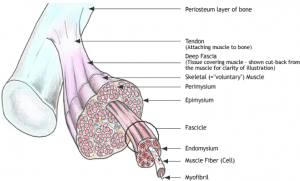
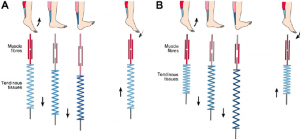
Contractile Components (sarcomeres = actin, myosin and cross bridges

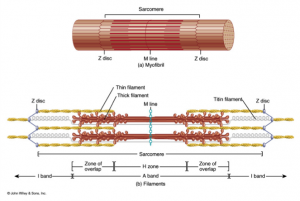
Myofascial System (Contractile + Elastic components combine to form myofibrils, muscle fibers, muscle bundles, muscle, Kinect chains)
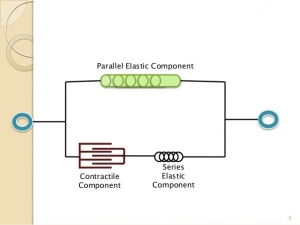
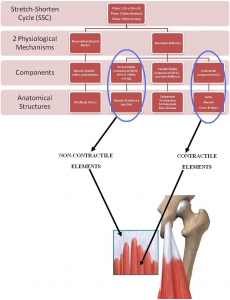
Regardless if the goal is fitness, function or performance function, all of these elements contribute to creating movement. Furthermore, all personally trainable movement is under the control of the Nervous System and is influenced by the current state of the human neuromuscular system. States that influence performance include:
- Current fuel pools
- Tissue & nervous system recovery
- Posture and dynamic postural stability
- Mental & emotional preparedness
These can all impact the ability, capacity and type of resistance training a client really needs. On top of that we must consider the goals of the client. A client who wants to play with their grandchildren vs. participate in the CrossFit games or gain muscle vs loss weight, or play sports competitively vs recreationally, if they are old vs young, a lot of weight training experience vs little. These variables will all will change the style and degree of loading that is required from resistance. So, again, all factions are correct, every form of resistance training can and probably should be performed to create the greatest amount strength, power and athleticism gains. But, if your goal is strictly function, let me introduce you to the biggest bang for resistance training buck. One style of training that best combines metabolic, contractile and elastic tissue responses throughout muscle and their kinetic chains is called Loaded Movement Training.
Loaded movement training can best be defined as moving & managing resistance in such a way that shifts the center of gravity away from its current base of support. This style of training forces the limbs and core, to efficiently / synchronously create & dissipate force, stabilization joints. And uniquely vs other forms of training loads both elastic and contractile elements Kettlebell, Indian Club, Plyometrics, SAQ, ViPR, Bulgarian Bag, Tai Chi training all fall within this discipline, and athletes from ballerina’s to wrestlers, heavily rely upon a combination of their catapult / ninja / kangaroo and maximal force production capacities. The most impressive & movement proficient animals, athletes and adults can equally access impressive forms of lb. for lb. strength and spring loaded mechanisms.
In my opinion, the addition of functional movement assessment and loaded movement programming are the 2 greatest innovations I have seen in the last 20 years of functional resistance training. The reason(s) why loaded movement training is so important as we age are:
- Each fitness related issue in the table below can help overcome with the proper Rx of
- Time: since one style of training simultaneously trains most major muscular & fitness components, the time required is significantly less than having to perform separate mobility, stability, core, plyometrics & weight training in one session. When I first trained elite athletes my training sessions were upwards of 3 hr. long. When I switched to this model of myofascial integration, the time to train an elite athlete dropped by an hr., sometimes more.
Here’s a table that is based on the science of aging, societal inactivity statistics. As we get older:
|
Fitness Related Issue |
Outcome |
| 1. Amount of sedentary hours per day increases
2. Intramuscular fibrosis increases 3. Joint capsule fibrosis increases 4. Elastin & Collagen decreases 5. Reduced testosterone, GH & Estrogen |
1. Poor cardio & circulation
2. Decreased flexibility & elasticity, muscle imbalances 3. Decreased flexibility & joint pain 4. Decreased muscle reactivity, elasticity, SAQ, power 5. Decreased muscle size & recovery
|
Training the Myofascial System Using Loaded Movement
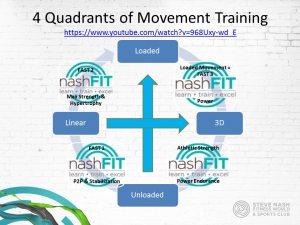
So, now that you’re sold on loaded movement training, what are the most effective ways to train it? First, we must grasp that loaded movement is a lifetime activity. But, the specific activities that one chooses to train this system can be quite varied and only has to follow two major principles.
- Progressive Overload
- Elastic & contractile integration (i.e. myofascial system).
While this may seem simple, it is a tricky subject and very much determined on the independent goals & needs of the client. In addition to the client’s individual goals, the client’s physical maturation, previous athletic / ninja training experience, overall movement intelligence (i.e. coordination) & recent movement history must be considered when prescribing loaded movements. Here are a few major training concepts / rules to consider when people have been
- SITTING
- AUTOMATED
- INACTIVE
- INJURED
- TRAINED LINEARLY
for a significant period during the adult lifetime. Yes that means 99% of the North American population isn’t ready to take advantage of loaded movement training. Regardless, let’s take a look and discuss both old & innovative ways to train the fascial and contractile components of muscle.
Prescribing Loaded Movement
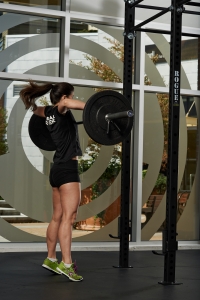
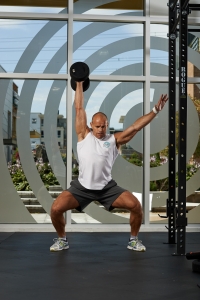
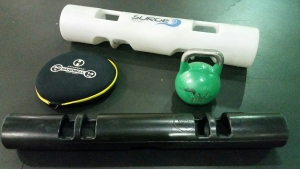
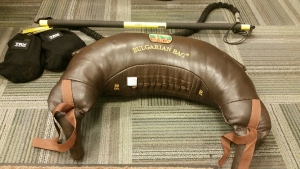
There are barriers to be mindful of when programming the cool, “big bang for your buck” loaded movements I have listed below. One of them being age and development. To that end, I have created this table of age / experience related fascial activities that will help set yourself and client’s up for generational success. The table integrates pieces of the LTAD (long-term athlete development) system and takes advantage of numerous phases of neuromuscular development.
|
Age |
General Rules for Lifetime Training of the Myofascial System |
Best Myofascial Activities for this Age Group |
|
Age 5 – Puberty |
|
|
|
Late Puberty – 20 |
|
|
|
20 – 30 |
|
|
|
30 – 40 |
– Development (new to fitness) or maintenance of all fitness components (experienced) |
|
|
40 – 50 |
|
|
|
50+ |
|
|
Beyond these specific population suggestions, there are general concepts and rules to follow when prescribing strength, particularly loaded movement. The good news, you can still hit those same Tarzan exercises you used to back in your teens and twenties. There’s only 2 major differences:
- The Strength exercises are performed slowly, especially during the eccentric or lengthening phase, and,
- They are combined with funky loaded movement exercises that are probably not in your coordination wheelhouse. Let the learning begin.
Rule 1: Adults with limited loading experience always start with a functional movement assessment, corrective exercise and proper functional strength & stability progression.
Rule 2: Typically, younger and older people need more stability & ninja / elastic component training
Rule 3: Due to high hormone production, teenagers past their rapid height changes should engage in general strength & hypertrophy programs. The lean body mass gains and maintenance thereof can keep metabolism high throughout next few decades of life.
Rule 4: Master neutral. Even though you are going to move in and out of neutral 3 dimensionally, core neutral means that your body has relative symmetry at the spine. Because all conscious movement is driven by the brain, proper spinal alignment creates greater brain activation, leading to distal mobility & strength.
Rule 5: Age, over activity and inactivity lead to tissue related fibrosis. Various forms of massage, some forms of SMR, CARS (i.e. rotational full range of motion exercises), slow rhythmic full ROM exercises can help remove fibrotic tissues / adhesions. If a client is either ab or c then time must be spent removing adhesions prior to loaded movement training.
Rule 6: Slow is Fast, Small is Big, Light is Heavy, Simple is Complex, Low is High, Recovery is Golden. Which means, start slow to become fast, small range of motion to achieve large range etc. Proper progression, vigilant & technical coaching are the foundations of preventing injury, while safely and effectively achieving strength goals.
Rule 7: Train movement not muscle. Prescribe exercises / movements that will train every muscle from earlobe to toe nail and in a way that doesn’t isolate and create movement dysfunction. In fact, the side plank, bridge and side plank will train every major muscle in your body. The problem: while variations of those movements can train every muscle, kinetic & fascial chain in the body, they are isometric based. To include concentric and eccentric muscle actions, we have to add other movements. Each one of the 10 movements below are multi-joint and therefore integrate multiple muscles & fascial chains. Plank, Side Plank, Bridge, Crawl, Squat, Split Squat / Lunge, Push, Pull, Chop & Lift.
Rule 8: Use complex movements. These are combinations of the multi-jointed movements listed above. The benefits are many but the two most obvious are 1. Transfer to life and sport 2. More muscles = greater metabolic demand and caloric expenditure = greater fat and weight-loss.
Rule 9: Train in 3 planes of motion (i.e. 3D)
- Frontal plane dominant movements to the side plank (i.e. lateral torso flexion, abduction & adduction: side plank, shoulder side lateral raise, standing cable side leg lifts, standing side bends)
- Sagittal plane dominant movements (i.e. flexion / bend & extension: 2ft bridge, 2ft plank, squat, split squat, push, row, press, pull)
- Transverse plane dominant movements (i.e. torso rotation, internal & external rotation: 1ft bridge / table top, bird dog, chop, lift)
Some of my favorite ways to train loaded movement are below but you can easily substitute a biomechanically similar loaded SAQ or plyometrics (i.e. loaded jump squat) exercise as the fascial dominant exercise. What makes these exercises top 10?
- They use multiple large muscle groups which increases effectiveness via 1. neuromuscular coordination, 2. increased metabolic demand, 2. increased focus & brain wave activity, 3. better transfer to life and sport
- Contractile dominant exercises all have high iEMg ratings for 1 or multiple muscles
- This variant with good instruction is relatively safe and easy to learn. For example the barbell snatch is a great exercise w the highest power / work outputs of any currently studied exercise. It isn’t included due the complexity to learn and injury risk/incidence when performed improperly. Therefore, I chose the DB variant. Similar rational on Fascial Burpee Vs Chest to Ground Variant.
In today’s fitness arena most training programs are contractile dominant. Therefore it is important to add various techniques to stress the elastic components. When putting together programs to train loaded movement there are a number of effective ways to do so. Here are a few suggestions and include a lot of the generation specific suggestions above:
- Include the appropriate dynamic range of motion exercises during the client’s flexibility training program
- Add Tai Chi, Qi Gong, Flow Yoga to your weekly schedule
- Include the appropriate SAQ / Plyometric exercises
- Include lightly loaded during the movement prep phase of the program
- As indicated in the table below you can create fascial contractile complexes in the resistance training phase of the training program
- *Complex Training: is a high load (i.e. Lunge) → w a biomechanically similar high velocity plyo. exercise (i.e. Cycling Split Jump)
- *Contrast Training: Max Power / moderate load exercise (i.e. barbell clean) w a biomechanically similar high velocity plyo. exercise (i.e. Cycling Split Jump)
- Loaded movement combined into mini circuits (i.e. KB Swings + Sled Push, Cable Jump Squat + Fascial Burpee)
NB* you can easily look these up on the internet.
|
Movement 1. Squat. Hinge 2. Lunge 3. Row, Hinge 4. Squat, Pull 5. Squat, Pull, Press 6. Pull 7. Chop/Lift 8. Push 9. Side Plank 10. Bridge, Press, Side Hinge |
Top 10 Contractile Dominant Multi-joint Exercises 1. Hex Bar Deadlift (3-1-1 tempo) 2. Split Squat / Lunge (3-1-1 tempo) 3. Bent over Row (3-1-1 tempo) 4. Dumbbell or Landmine Snatch (hold final position for 2 count) 5. Clean & Jerk (hold squat or final position for 2 count) 6. Strict Pull-up (3-1-1 tempo) 7. Cable Lifts (2-2-1 tempo) 8. Floor Decline Bench Press (3-1-1 tempo) 9. Loaded Side Plank (hold for time) 10. Turkish Get-up (pause each transition position for 1 sec) |
Top 10 Loaded Movement Exercises (all performed w rhythm & timing) 1. KB Swing 2. 50% Max Sled Push 3. Cable Jump Squat w 1 Arm Row 4. Russian Style KB Snatch 5. Dbl. KB Clean & Jerk 6. Kipping Pull-up 7. Bulgarian Bag Spin & Si2Si Hip Drop 8. Fascial Burpee 9. Bulgarian Bag Wood-chop 10. Turkish Get-up
|
|
Rx |
Contractile – Fascial Dominant Complexes 1. 2-6 reps → 30-90sec Rest → 8-12 reps 2. 4-6reps/si → 30-90sec Rest → 30-40m 3. 6-10reps → 30-90sec Rest → 4-6 reps/si 4. 2-6reps → 30-90sec Rest → 6-8reps/si 5. 2-6 reps → 30-90sec Rest → 6-8reps/si 6. 6-10reps → 30-90sec Rest → lof (loss of form) 7. 4-6reps/si → 30-45sec Rest → 6-8reps/si/move 8. 6-10 reps → 30-90sec Rest → 8-12 reps 9. 20-30sec/si → 30-90sec Rest →6-8reps/si 10.6-8si → 30-90sec Rest → Repeat Here’s an example: |
|
In Summary
There’s a new breed of exercise in town and it’s called loaded movement. I honestly, believe this one of the most important blogs I have written to date. That’s how important I believe loaded movement training is. It’s one of the best ways I know of to train your spring and contractile elements simultaneously. While also, improving joint stability, fascial glide, mobility, coordination, endurance & cardiovascular conditioning. Over the weeks ahead I will shoot videos for each of these & my personal favorite combo’s.
Additional Resources:
- Dr. Schleip’s book above
- http://www.fasciaresearch.de/Schleip_TrainingPrinciplesFascial.pdf
- http://www.fasciaresearch.de/
- Kenneth et al. (2013). Effects of KB training on postural coordination & jump performance. JSCR
- MacDonald et al. (2013). Foam rolling as a recovery tool…Medicine & Science in Sports & Exercise.
- McGill, S. (2012). Kettlebell swing, snatch….and low back loads. Journal of Strength & Conditioning, 26(1)
- McMurray, R. et al. (2014). Examining Variations of Resting Metabolic Rate of Adults: A Public Health Perspective. Med Sci Sports Exerc. 2014 Jul; 46(7): 1352–1358.
- Myers, T. Anatomy Trains (2nd Ed)
- http://paveltsatsouline.net/pavel-tsatsouline-on-stretching
Tags:
Related Posts
We’re here to help you!
Questions, comments or want to register? Fill out the form below and we will contact you shortly. Thanks!
"*" indicates required fields

